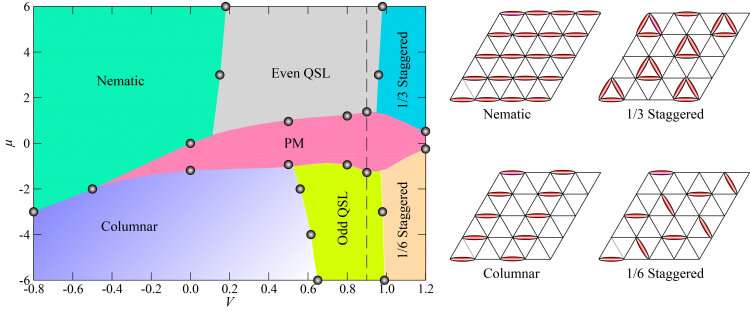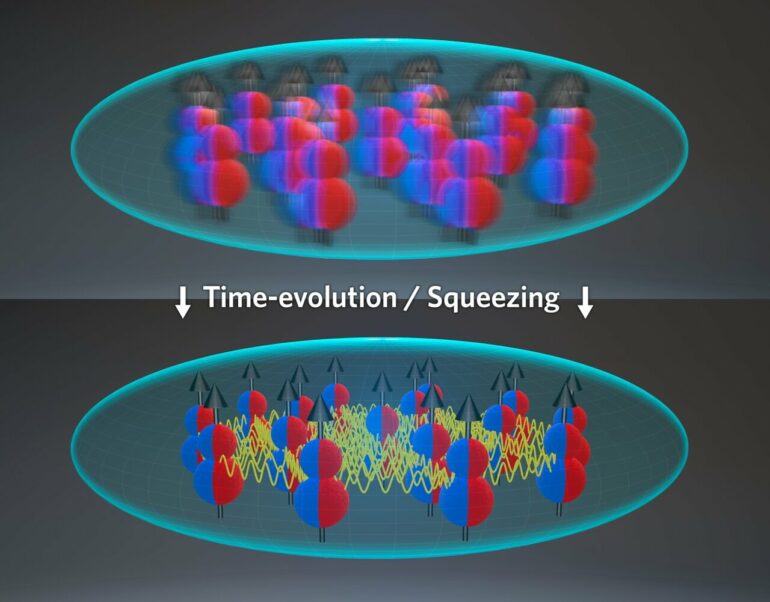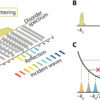Quantum science has not only deepened human understanding of the structure of matter and its microscopic interactions, but also introduced a new paradigm of computing and information science—quantum computing and quantum simulation. Quantum informatics research has won the 2022 Nobel Prize in Physics.
Among many quantum computing and simulation platforms, Rydberg Atom Arrays is considered the most promising system to show quantum superiority among many programmable quantum simulator platforms in recent years due to its largest number of qubits and highest experimental accuracy.
Such optical lattices consist of individual neutral alkaline-earth atoms with significant dipole moments trapped in arrays of microscopic dipole traps, which can be optically moved at will to make desired lattice geometry. Each atom can be excited to its Rydberg state, and a pair of excited states interact through their dipole moments via a long-range interaction.
Such Rydberg atom arrays are believed by many to be the system with the highest level of experimental precision and number of qubits in recent years within all platforms for programmable quantum simulators. The observations of quantum phase transitions and the signature of topological orders from Rydberg atom arrays have been reported with tremendous speed.
However, the long-range interaction and the Rydberg blockade mechanism in these optical lattices can have both pros and cons. On the one hand, they give rise to the high precision of experimental quantum control, as mentioned above. Still, on the other hand, they enforce the constraints on modeling the system.
Such quantum-constrained many-body systems are among the hardest to study from theoretical and numerical perspectives. Without a precise theoretical understanding of the complete phase diagrams and novel quantum phases, future experiments will have no guidance to continue.

The obtained phase diagram in this work. Within different phases, the even Z2 quantum spin liquid (QSL) and odd Z2 QSL are topological ordered novel states of matter that are expected to exist in the Rydberg atom array experiments on Kagome lattices. © The University of Hong Kong
Such an apparent conundrum, faced by all scientists in the field, is partially and substantially solved by a joint effort of Research Assistant Professor Zheng Yan and Associate Professor Zi Yang Meng from the Department of Physics, the University of Hong Kong (HKU) and the renowned physicist Professor Subir Sachdev (member of American Academy of Arts and Sciences) from Harvard University and his then student Dr. Rhine Samajdar now Postdoctoral fellow at Princeton University and Dr. Yan-Cheng Wang (Researcher) from Beihang Hangzhou Innovation Institute Yuhang at Hangzhou. Their research work has been published in the recent issue of Nature Communications.
They designed a new triangular lattice quantum dimer model with soft constraints to be as close as possible to experiment conditions and developed the sweeping cluster algorithm for quantum Monte Carlo simulations that could solve such soft-constrained quantum many-body systems efficiently.
Their simulations and theoretical analysis successfully map out the expected phase diagram of Rydberg arrays on the Kagome lattice. They found not only the expected and conventional nematic and stagger types of the solid phases but also the exotic highly entangled Z2 quantum spin liquids (QSL) with large parameter regimes in the phase diagram.
They identify these novel phases by designing non-local measurements of string operators and other physical observables in the quantum Monte Carlo simulations. The difference between QSL and trivial paramagnetic phase is distinguished successfully. The most exciting thing is that a path connecting odd Z2 QSL, trivial paramagnetic (PM) phase, and even QSL and solid phases has been revealed, which is very useful in guiding the Rydberg arrays experiment.
In addition, they have also studied the dynamics and interactions of the fractional quasiparticles (visons) in the Z2 QSL to give more experimentally probable evidence.
These results highlight the richness of their constrained models derived for Rydberg array systems and exploit various new phases induced by the long-range interactions and Rydberg blockade mechanism.
More information:
Zheng Yan et al, Triangular lattice quantum dimer model with variable dimer density, Nature Communications (2022). DOI: 10.1038/s41467-022-33431-5
Provided by
The University of Hong Kong
Citation:
Physicists predict the novel entangled states on programmable quantum simulators (2022, October 13)



